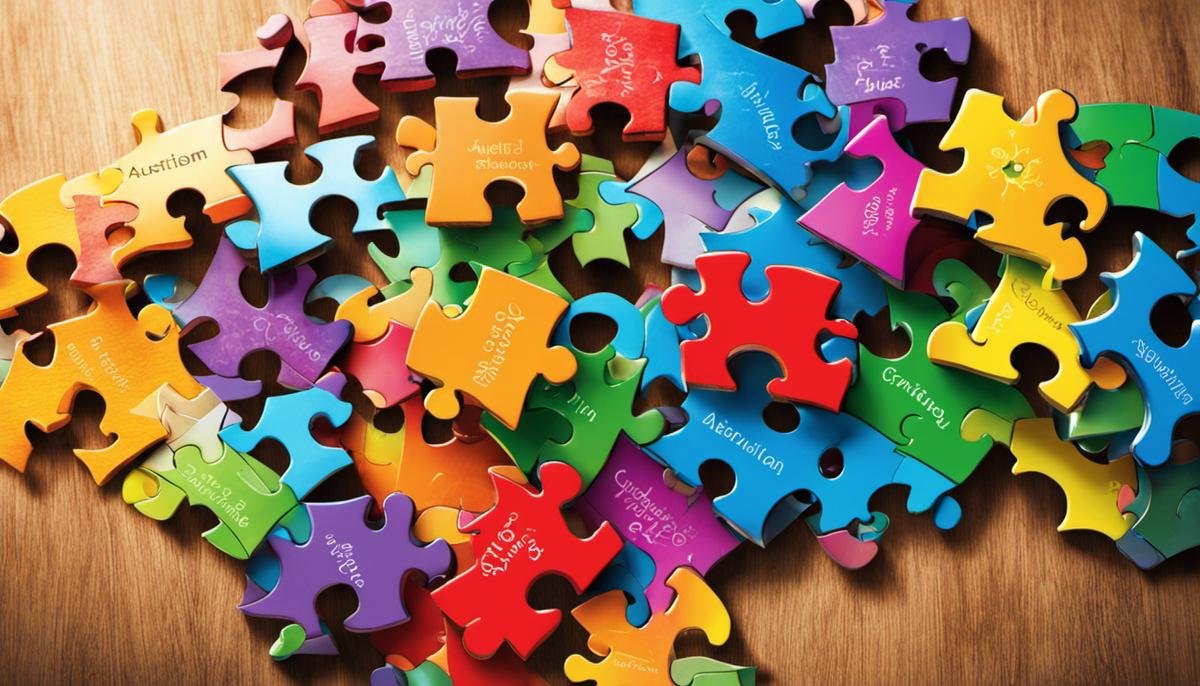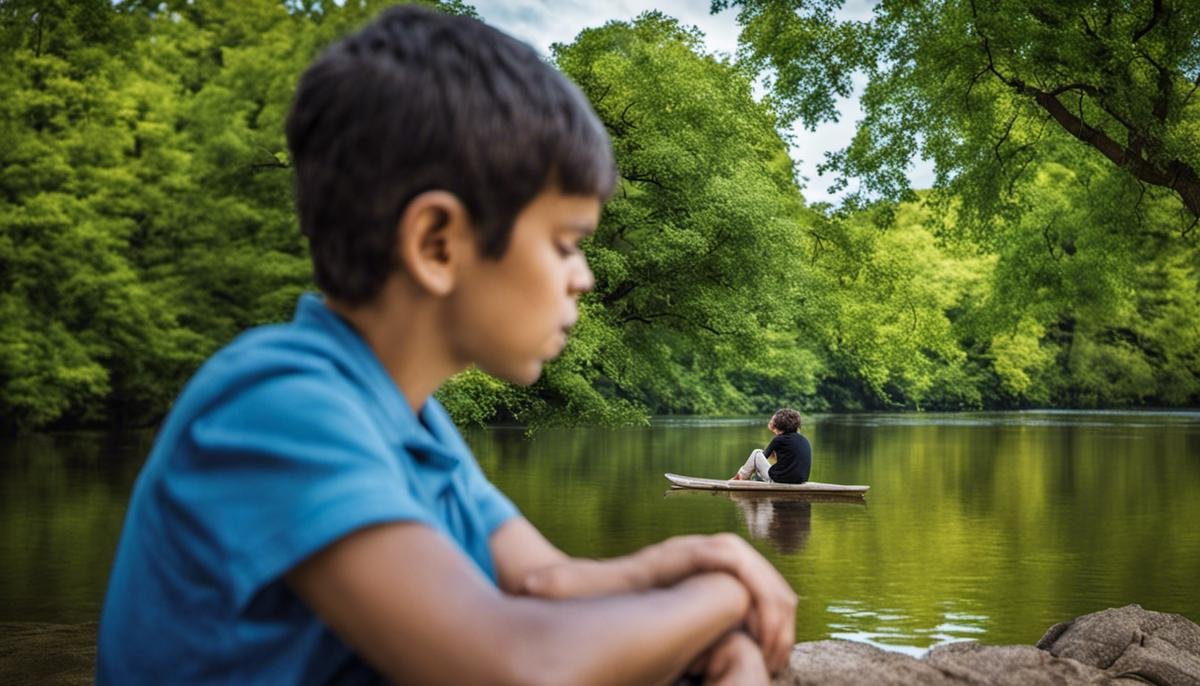
Autism is a neurological difference primarily marked by distinct social interaction and communication patterns, often accompanied by particular behavioral qualities. While each individual with autism has a unique set of strengths and challenges, one common issue is the difficulty experienced during various transitional phases of life. From starting school, moving from primary to secondary education, stepping into workforce to rivers of their lives, both the individual and their family may encounter challenges and hardships. This understanding necessitates a comprehensive exploration into transition challenges associated with autism, practical navigation tools and techniques, the role of community support, and the significance of an enriching family environment in providing crucial support.
Understanding Transition Challenges with Autism
Navigating Transition Challenges: A Guide for Families with Autistic Individuals
Here’s a truth every parent quickly learns: growing up comes with countless changes and transitions. From the small daily rhythms like waking up and going to bed, to the larger life experiences like moving to a new home or city, starting a new school or job, we all encounter transitions. However, for individuals with autism, transitions can present unique challenges and often require special support and understanding.
So, what exactly are the key transition challenges that individuals with autism face?
First and foremost, adapting to change in general can be daunting. Routine and predictability often provide a sense of comfort and stability for those with autism. Slight alterations to their daily tasks, structure or routine may lead to feelings of stress, anxiety and confusion, which can in turn result in behavioral shifts.
Secondly, sensory processing issues are another common transitional challenge. Many individuals with autism are hypersensitive to their environments, meaning they may react strongly to certain lights, sounds, smells, tastes, or textures. This hypersensitivity can make commonplace transitions, like moving from a quiet home to a bustling supermarket, dramatically overwhelming.
Social interactions and communication are another area of challenge during transitions for individuals with autism. Integration into new social environments, such as starting at a new school or joining a new community group, often calls for advanced interpersonal skills which can be demanding for someone with autism.
Finally, transitioning into adulthood and independence is a significant challenge faced by those with autism. This transition can involve many aspects, including continuing education, employment, independent living, and healthy relationships. These can be emotionally and cognitively taxing tasks for anyone, let alone for individuals who experience the world in a fundamentally different way.
How can we, as caring family members, friends, and advocates, help to ease these transitions? Being aware of these common challenges is the first crucial step. Knowledge equips us to build comprehension, empathy, and patience, all of which are useful tools when supporting a loved one with autism.
Remember, we’re trying to build a bridge to their world, not pull them into ours. For example, using visual aids or social stories can gently prepare them for changes in routine. A silent pass or headphones may provide a sensory buffer in busy, noisy environments. Exercising patience, giving them ample time and space to process social interactions and changes, can also be incredibly helpful.
A significant part of easing these transition challenges lies in fostering a supportive and understanding atmosphere. It’s essential to celebrate their unique strengths and victories, no matter how small they may seem.
Remember, every transition faced by an individual with autism is not merely a challenge but a learning opportunity. Achieving a successful transition, no matter how small, can help to build their confidence in navigating the wider world, fostering a sense of accomplishment and satisfaction.
Growing up happens one day at a time, and every day brings new obstacles, but also new opportunities. Let’s aim to walk alongside our loved ones with autism, making that journey just a little bit smoother.

Tools and Techniques for Navigating Transition Challenges
Let’s now move on to other pertinent tools and techniques that can make a world of difference when helping individuals with autism navigate life transitions.
First on our list is thoughtful desensitization. This technique is all about acclimatizing our kiddos gradually to new experiences. It’s kind of like dipping a toe in before diving into unfamiliar waters. Let’s say, for instance, your child is transitioning to a new school. It would help if you visited the school a few times before the academic year begins, familiarizing your child with the surroundings and routines. This gradual introduction reduces the intensity of the change, making transitions smoother and less intimidating.
Occupational Therapy (OT) should also be on our radar. This therapy encourages performing everyday tasks, enhancing motor skills, emotional regulation, and boosting independence. OT can ease transitions by enabling the development of robust coping skills and strategies, leaving a positive impact on the quality of life.
Applied Behavioral Analysis (ABA) therapy is also a beneficial tool. ABA therapy uses different techniques to understand and change behaviors, making it easier for those with autism to cope with transitions. It primarily focuses on improving social skills, communication, reading, and adaptive living skills.
Moving on, we shouldn’t lose sight of the importance of technology. There’s an app for everything these days, and that includes helping individuals with autism manage transitions. These apps can provide helpful visual schedules or even calming games to alleviate stress related to transitions.
In the same vein, let’s not forget the merits of a solid support network. Surrounding individuals with autism with a robust community of supportive friends, family, and therapy professionals aids tremendously. This network of support provides an environment conducive to patient understanding, encouragement, and emotional safety, which can ease the strain of transitions.
Lastly, and importantly, empathy and understanding. Navigating transitions are often tricky for individuals with autism. Therefore, empathy — understanding their perspective and feelings, and responding with compassion — can make a real difference. It’s about letting them know that it’s okay to find transitions hard and confirming that they’re not alone in their journey.
Managing transition challenges in autism can seem daunting, both for individuals with autism and their loved ones. However, with these sensible tools and techniques on board, these transitions can become significantly less stressful and more manageable. Remember, our approach towards these transitions can go a long way in molding the experience for someone with autism, showcasing the beauty and strength hidden within these challenges.

Role of Community and Support Systems
The Power of Community in Managing Autism Transition Challenges
In the journey of raising a child with autism, witnessing their transition challenges can often be as nerve-wracking as it is joyous. With the previously mentioned insights, families have valuable tools to smoothen the process but, let’s not forget the impact of community and support systems in navigating this lush spectrum of experiences.
Community – whether you look at it as physical neighborhoods, online groups, or more intimate support circles, paints the backdrop of diverse life experiences. In the context of autism transition challenges, your community serves as the safe and brave space where emotional, informational and companionship support can shine.
For starters, a community provides a range of perspectives and experiences to learn from, transforming the seemingly overwhelming journey into an easier, guided one. Think of it as a veteran parachute jumper sharing tips and reassurances with a beginner about to make their first leap. The parachute, in this case, could be an online forum where parents share their experiences and advice on managing transitions.
Community and friendships also play a vital role in the social development of children with autism. Participating in group activities encourages social interaction and helps them learn to vocalize emotions and understand the feelings of others. Plus, shared experiences offer a sense of belonging, which can boost self-esteem.
Support systems, on the other hand, are the emotional buffer through the rollercoaster of transition challenges. They might not provide tangible solutions, but when navigating unfamiliar waters, the mere presence of a shoulder to lean on spells a world of difference.
Professional networks form a critical part of these support systems. Think of pediatricians, therapists, and teachers who contribute significantly to managing transition challenges. Sharing their expertise, they help decode the complex puzzle of transitions, guiding every step of the journey.
In addition, parenting support groups are a beneficial ally in managing transition challenges. These groups are an invaluable resource in terms of emotional support and shared experience. From swapping stories about behavioral strategies to advising on specific transitions like moving to-do lists, their firsthand experiences are goldmines of practical wisdom.
To conclude, community and support systems have an undeniable influence in managing the upheaval that autism transition challenges bring. Like different pieces of a puzzle, each support facet – from community groups and friendships to professional networks and parenting forums – complements the previous insights to deliver a holistic approach. In this vibrant network of support, no challenge is insurmountable, and no success, however small, goes unnoticed. While transitions maybe a fact of life, how we navigate them together is what truly defines the journey.

Fostering an Enriching Family Environment
Enhancing Family Bonds for Robust Autism Transitions
Navigating through the world with autism can present unexpected challenges. However, those challenges can be dealt with far easier by keeping a few techniques and strategies handy. It is important to focus a little more on the family dynamic. The family plays a significant role in managing autism transitions smoothly, providing the emotional scaffolding a young person needs to forge ahead confidently.
COMMUNICATING THE AUTISM SPECTRUM
Open communication within the family about the nature of autism can significantly aid the transition process. Discussing autism’s realities, dispelling myths, and fostering an understanding can greatly reassure and strengthen individuals within the family to support their loved one traversing this journey. Promoting uninhibited expressions of feelings, questions, and concerns will make way for understanding, cooperation, and support among siblings and extended family members.
EMPOWERING FAMILY MEMBERS
Every family member directly or indirectly helps in fostering a conducive environment. It is crucial to empower each one by educating them about practical ways to assist the autistic child or adult. This could mean teaching them about new ways of communication, guiding them on how to make their loved one comfortable, or explaining the nuances of specific behaviours.
Education might also mean workshops, seminars, and ongoing training about autism for family members, which assists not only in understanding autism better but also in reinforcing the bond among family members. Everyone evolves as part of the coping mechanism, comprehending the unique needs and strengths of their loved one.
THE CONCEPT OF SAFE SPACES
Creating a safe space at home can make it considerably easier for those struggling with autism transition issues. The safe space, which could be a room or even just a corner of the home, should resonate with comfort, familiarity, and security. Ideally, it should be an area where sensory stimuli can be wholly controlled and minimized if needed. This space can provide a sanctuary of tranquillity amidst transition-induced stress or when sensory overload becomes overwhelming.
AVOIDING COMPARISONS
Families managing autism transitions should avoid comparing their loved one’s journey to that of neurotypical individuals. Instead, it is more beneficial to embrace their unique journey and pace of development. Doing this not only provides reassurance, but it also empowers those with autism to acknowledge and appreciate their differences. It is these unique differences that make each person special and usher in a different perspective, enriching lives in the process.
A HOLISTIC APPROACH
Maintaining physical health and well-being plays a significant part in dealing with transitions smoothly. Nutritious meals, adequate physical activity, and plenty of rest aid in overall good health, thereby contributing to the ability to handle transition-related stress better. Certain therapeutic activities such as horseback riding or gardening can have a calming effect and can also serve as potential coping mechanisms when dealing with anxiety during transitions.
Remember, fostering a nurturing and resilient family environment for smoother autism transitions is a shared journey. It is not merely offering a helping hand, but rather a heartfelt embrace that weaves strands of patience, understanding, and unconditional love. While the road may not always be smooth, the noise of the journey is, indeed, the sweetest symphony, building memories and forming deep bonds along the way.

Individuals with autism, their families, and communities are constantly learning, adapting, and growing. Navigating transitions can be daunting and challenging. Yet, with the right tools and support, they can be managed effectively. Emphasizing on the importance of a nurturing family environment, the deployment of innovative strategies and practical tools, and the role of supportive community structures, one can create a path to more seamless transitions across life stages. The journey, while challenging, opens up the potential for growth, resilience, and a deepened understanding of the richness that is embodied in every individual with autism. It is through these continuous efforts that we can foster an increasingly inclusive society, where everyone can thrive despite their unique challenges and strengths.




